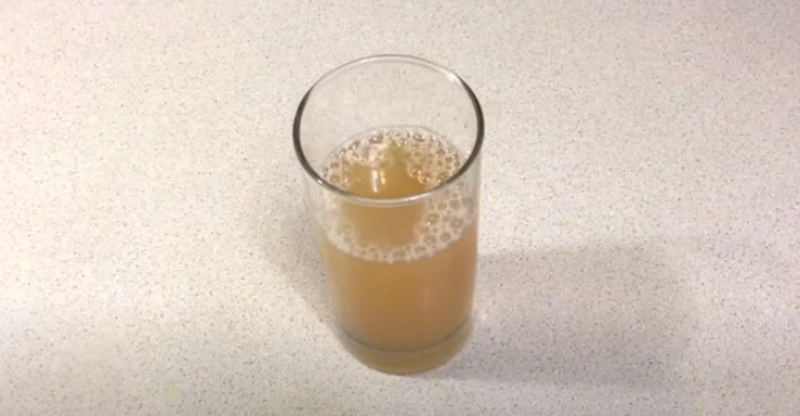How To Make Apple Juice Without A Juicer
Do You Love Apple Juice But Don’t Have a Juicer?
Apple season is here, ladies and gentlemen. Because of the mild spring, the apple blossoms in Finland were more profuse than they had been in the previous ten years. The pollinators got to work, and with sunny days and no rain this Spring, it looks they did a good job. Everywhere we walk today, we see apple trees laden with apples. There has never been a finer time to prepare fresh apple juice.
How To Make Apple Juice Without A Juicer
Ingredients Required
- Sugar 18 apples
- Cinnamon
- Sugar (if Needed)
Steps to Follow
Step 1-Begin by washing and coring the apple to remove the seeds. Slice the apples into thin pieces. The apples do not need to be peeled.
Step 2-Fill the saucepan halfway with water, then add the apples. If you add too much water, the juice will be quite diluted. This juice may be a little strong, but it’s far easier to dilute the juice by adding water than it is to attempt to make the taste stronger.
Step 3-Boil the apples slowly for about 20-25 minutes, or until they are tender. Place a coffee filter or a piece of cheesecloth in a fine-mesh strainer over a basin.
Step 4-Ladle the heated juice/apple combination into a fine-mesh strainer and mash the apples gently. The juice will be filtered into your bowl via the bottom, leaving the apple mush behind. Put the mush in a separate bowl to save for later. Repeat until all of the juice has been poured into the bowl.
Step 5-After the juice has cooled for a few minutes, taste it. Depending on your tastes, you can add more sugar or cinnamon. If the flavor is too strong, you can add water a little at a time to lessen it.
Step 6-The apple mush you gathered may be easily transformed into applesauce by pureeing it and seasoning it with sugar and cinnamon to taste.
Step 7-Because your homemade apple juice has no preservatives, keep it refrigerated and use it within a week!
More Information On This Recipe
Have you ever longed to produce your own fresh, homemade apple juice? Surprise! It’s very simple and the ideal way to salute the fall season.
If you enjoy fresh apple juice but do not have time to visit an orchard this autumn, we have a solution for you: homemade apple juice is amazingly simple, tastes delicious, and only requires a few basic steps.
Begin with a 5-6 pound package of apples; around 18 apples will provide 2 quarts (about 8 cups) of juice. Scale up or down as desired. Here is an important tip: the apples you choose will have a significant impact on the flavor of your juice. As a result, we recommend beginning with a naturally sweet apple, such as Fuji, Gala, or Red Delicious. Better still, combine several apple kinds for a more nuanced flavor.
You Will Also Need The Following Items
To begin, wash and core the apples to remove the seeds (we recommend using a cheap apple slicer to save time on this step). Then slice the apples; you may even leave the peeling on. Keep in mind that keeping the peels on can change the color of your juice and may give it a pink hue depending on the apple variety.
Fill the saucepan halfway with water, then add the apples. If you add too much water, the juice will get diluted. If your finished juice is too strong-tasting, it’s much easier to add water later.
Cook the apples for 20-25 minutes, or until they are extremely soft. Place a fine-mesh strainer over a bowl and line it with a coffee filter or cheesecloth. It is preferable if your bowl has a handle for pouring into your storage container, but it’s not required.
Ladle the apple-water combination slowly into the fine mesh strainer and carefully crush the apples. The juice will pass through the sieve and into your jar, leaving the apple mush behind. But do not get rid of the mush! Save it in a separate dish for later. Repeat this step until all of your juice has been collected in the jar.
Take a sip of the juice when it has cooled. This is when you may alter the sweetness to your liking by adding more sugar (or the sweetener of your choice). If you want to spice it up a little more, add a little cinnamon. If the juice is too powerful, add a splash of water to dilute it somewhat.
Do you know that leftover apple mush you saved? To make applesauce, add sugar and cinnamon to taste, purée to desired consistency, and voila: homemade applesauce.
Frequently Asked Questions
Q1: What kind of apples should I use to make apple juice?
Ans: There are certain types of apples that are sweeter and certain types of apples that have a more tangy, sour taste. In the case of homemade apple juice, you probably want to use a sweeter apple, so you don’t have to add any sugar. I used Gala apples for this recipe because they were available as seconds at our local orchard. Gala has a very sweet taste.
Q2: What’s the difference between apple juice and apple cider?
Ans: There are a few differences between apple juice vs apple cider. Apple juice is going to be a thinner, more transparent liquid without any pulp left behind. Apple cider is a thicker, more opaque juice, and it may have pulp and chunks of apple left behind. You can make a warm mulled cider with spices and citrus. And in terms of commercial apple cider vs apple juice, apple juice is pasteurized and has a longer shelf life than apple cider
To Wrap it All Up
All that remains is for you to enjoy the benefits of your effort (get it? sorry!). Because homemade apple juice has no preservatives, it should be refrigerated and used within a week. (However, this stuff is so excellent that we doubt it will survive that long.)








